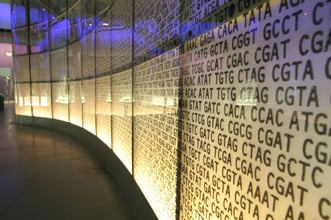 As next-generation sequencing (NGS) has advanced and doctors have learned to match therapies to specific tumor genotypes, genetic profiling of newly diagnosed cancer has become standard practice.
As next-generation sequencing (NGS) has advanced and doctors have learned to match therapies to specific tumor genotypes, genetic profiling of newly diagnosed cancer has become standard practice.
As a clinical laboratory director or scientist, you want to make sure doctors and patients are working with the best diagnostic results. That means making strategic technology choices and sourcing decisions when choosing NGS assays, sequencing platforms, and bioinformatics pipelines. Often, the first decisions you make are the most important, as they have lasting effects on patient care and your lab’s ability to compete in the exploding NGS market.
But adopting an NGS technology is not like adopting any other new method for a clinical lab – not when you consider the number of genes and gene regions that are sequenced, the complexity of types of driver mutations, and the myriad of sequencing schemes and bioinformatics platforms available.
Because creating a new NGS assay is so complex, it will take us three blog articles to explain all the factors that should play into your decision-making process. As you’ll learn, there are three critical steps for building a “bulletproof” NGS assay:
- Consult with experts
- Outline your validation and quality control (QC) strategies together
- Evaluate reference material options
What do we mean by bulletproof? A bulletproof NGS assay is one that exhibits the highest performance and reliability in delivering patient results. If you want every assay your lab develops to be bulletproof, read on.
Step 1: Consult the Experts
The first thing to do is to ensure you have access to a collaborator who has technical and operational insight into NGS oncology assays. These experts are critical to applying and interpreting NGS assay guidelines for your program. They will help you gain regulatory approval as quickly and affordably as possible.
The Guidelines Don’t Have All the Answers
All CLIA labs follow recommended guidelines. But the guidelines do not necessarily tell you how to:
- Optimize assay performance.
- Improve lab adoption.
- Achieve your cost objectives.
For example, a team of experts led by Lawrence J. Jennings recently published guidelines for NGS oncology assays representing a consensus directive from the Association for Molecular Pathology and the College of American Pathologists.
The AMP-CAP guidelines are over 21 pages long. They’re rich in detail, well referenced, and discuss the many considerations for technology selection, assay design, validation, and QC. But they won’t teach you how to recover DNA from a problem sample, evaluate library prep kits, or select a bioinformatics platform.
No single set of guidelines is detailed enough to help you understand and control every variable that goes into achieving success with patient samples.
For example, in the sample prep section of the AMP-CAP guidelines, the authors point out that there is significant inter-observer variability in estimating tumor percentages from FFPE slides. But they don’t suggest how to mitigate this issue. Should it be through new standards or is additional QC required?
Experts Will Answer What Guidelines Won’t
Professional guidelines provide options to consider. But for additional practical guidance during the assay design phase, your lab should connect with experts.
Here’s an example:
At a recent SeraCare-sponsored lecture, Dr. Dara Aisner, Director of Pathology at the University of Colorado Medical School, pointed out that assay design and validation is more than just running the “right” number of samples.
During her talk, Dr. Aisner discussed sources of preanalytical variability for somatic tumor sample processing. She said that preanalytical validation should focus less on distribution across tissue types (since most tissues are highly equivalent in core constituents) and more on exploring molecular diagnostic matrix effects from variables such as mucin, chondroid, or melanin.
Dr. Aisner also discussed how imposed metrics for a validated assay can be limiting. The example she gave was NGS testing of a moderate- to poor-quality FFPE sample from an adenocarcinoma patient. The NGS results showed extremely high levels of artifacts, and there were multiple places where the assay could have failed due to imposed metrics. However, upon digging deeper in the data sets, an EGFR exon 19 deletion was detected; the patient could undergo targeted treatment.
Learning from experts (like Dr. Aisner) who have experience confronting and mitigating preanalytical variables can be the difference between a successful and unsuccessful assay launch.
Up Next: Why You Should Design Your Assay Validation Study and QC Plan Together
You made it through step one of our three-step program for creating a bulletproof clinical NGS assay. You learned how seasoned experts can help you go beyond the guidelines to answer some of the toughest NGS assay development questions.
In step two, we’ll look at the how strategically outlining your NGS assay validation study and QC plan together will give you the best chance of creating a high-quality functioning assay.





